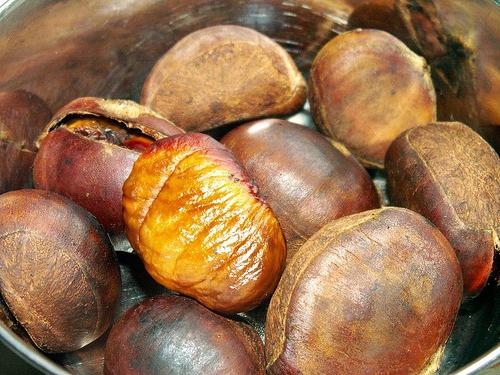Deciduous plants of the Chestnut genus from the beechen family Castanea sativa, or simply edible chestnuts, are widespread in European territory, where they have been cultivated for several centuries for tasty and nutritious fruits. Due to their hardiness and frost resistance, these trees grow even in the northern countries of Europe, for example, on the British Isles. However, regions with a mild climate, where there are no late spring frosts that adversely affect flowering, still have ideal conditions for this plant.
Description of edible chestnut
The adult plant is characterized by a wide, slender trunk, which is covered by a gray corrugated bark with vertical or spiral grooves. Its height can reach 35 meters and a diameter of two meters. The shape of the leaves is oblong, ovally pointed, with a serrated edge, and their size is 16-28 cm in length and 5-10 cm in width. In our area, as you know, horse chestnut is common , and many do not know how to distinguish edible chestnut from inedible. So, it is on the leaves. A plant with inedible fruits has complex palmate leaves that are located on the common petiole for 5-7 pieces, while its noble relative has large and dense single leaves with a glossy finish. The flowering period of the chestnut is the first half of summer (late June - early July). Small white flowers appear at the ends of the branches, collected in long (10-20 cm) catkins, growing in bunches. Interestingly, in one earring there are flowers of both sexes - the upper part of the earring is occupied by male flowers, and the lower - by female. By autumn, the fruits of an edible chestnut ripen from female flowers, having a round shape and covered with a prickly protective shell, which protects them from small animals and birds. In October, the ripened fruits leave their prickly "house".

Growing conditions
Edible chestnuts grow well on well-drained sandy and light fertile soils. They do not tolerate overly shaded areas and excessively wet, marshy, infertile or calcareous soils. Propagation of plants is carried out by grafting or by seeds that ripen in mid-autumn. The main enemy of chestnut fruits is gray squirrel, so trees should be planted where this animal is not found. It should be remembered that in regions with very low temperatures, chestnut will not bear fruit.
Edible chestnuts - a real delicacy
The main wealth of Castanea sativa are delicious starchy nuts. Their nutritional qualities are similar to those of wheat, the only exception is the gluten binding protein - this component is absent in the fruits. Chestnut flour is used in the preparation of dough products to give them a peculiar flavor and friability. In addition, edible chestnuts play the role of raw materials in brewing, and are also an excellent component for cakes and puddings. They are also used as an independent confectionery product, for example, fried candied chestnuts are very popular in France.